Jackson Hole has more spirit than any other ski resort in North America. Is that a reflection of its fantastic, super-steep skiing? You bet.
The Stats
Base altitude: 6,311ft (1924m)
Lifts: 13
Top Lift: 10,450ft (3185m)
Vertical Drop: 4,139ft (1262m)
Ski area: 2,500 acres of terrain
Adult lift pass: $702-$1235 (purchase online) for six days / or to ski it more economically, check out the Ikon Pass
Official Site |
Ski Map |
Webcam
Essential Advice for the Perfect Trip
Heaven. That’s how we think of Jackson. Along with Verbier, Val d’Isère and St Anton, this is the ski resort we dream of most. Why? Simple. The combination of the terrain and snowfall is second to none.
But those are not the only attractions here. The mighty Teton mountains have a wild beauty that captivates you from the moment you touch down at Jackson Hole airport. From the runway you can see herds of elk and even the occasional moose. It’s a 15-minute drive to the town of Jackson but, confusingly, Jackson Hole ski resort is located a further 20-minute drive (12 miles) away at Teton Village on the far side of the Snake River.
A Cowboy Town With Incredible Skiing
Jackson is a town of wooden boardwalks and a main square that focuses on an archway made from hundreds of naturally-shed elk antlers. For this is Wild West country – where stores sell authentic cowboy boots and stetsons, hand-made tomahawks, and elk antler light-fittings. Of course there are sports shops too – to service the steep-and-deep brigade who’ve come here just for the skiing.
The slopes of Jackson Hole Mountain Resort rise up out of the Snake River valley in what seems like a sheer wall, and are the most consistently steep we know. Add to that North America’s highest continuous vertical drop (over 4,000ft/1262m), a mouth-watering variety of terrain – including cliff-bands, couloirs, open bowls and trees – and a snowfall average of 369 inches a winter, and you’ve got a near-perfect destination for anyone looking to push their limits.
It’s no wonder that, in recent years, this has been the forcing house of extreme skiing talent in America, repeatedly featured in Forbes Top 10 Ski Resorts in North America. Incidentally, nearby Grand Targhee makes it into North America’s top ten as well.
Guide to the Mountain
Thirteen lifts in Jackson Hole doesn’t sound a lot but they offer an immense amount of steep and deep skiing. Some 50% of the terrain is described as ‘difficult’ to ‘very difficult’, and you can go through controlled gates into a wider area of outbounds off-piste, for which you need a guide.
Along with Verbier, Jackson Hole is the best resort in the world for skiers who want to push their limits, and break away from the intermediate plateau.
For example Cheyenne Bowl, on the southern edge of the resort, is inbounds, avalanche-proofed, and properly steep. And there’s terrain like this all over the resort, from top to bottom (provided you come before the end of February).
To get to Casper Bowl, in the middle of the resort requires a 600ft steep slog up from the top of the Bridger gondola (called the White Spider), or via a gentler 10-minute route from the Cirque, called Pepi’s Ridge. There’s a long-ish traverse/hike across the Headwall area if you access from Pepi’s ridge, and then you get access to endless gullies and shoots, followed – if conditions are right – by some creamy, dreamy powder fields between trees.
Admittedly, it’s a lot of work for your reward. And there’s no doubt that Jackson Hole’s extreme terrain comes in short, sharp bursts rather than the mighty, 6,000ft descents you’ll find in the Alps. But the fact that you’ll hike several times in a day, and ski or board multiple lines, instead of just the one endless route, adds to the sense of physical intensity. And the sense of variety too. It’s no wonder that this place has become the home to American extreme skiing talent.
There are two obvious highlights in Jackson Hole.
Corbet’s Couloir
Corbet’s Couloir is probably the most famous single drop in American skiing.
Once upon a time, back in the early 1970s – this was the final frontier. Even now, for the ordinary guy or gal, it’s a big feather to wear in your cap. The pros will tell you there’s nothing to it, but the entry. But what an entry… Depending on the snow year, the drop in changes, but expect a minimum 10ft drop followed by an instant and very sharp turn so that you don’t slam the massive rock wall on the left. Get it right, and you’ll have bragging rights for the whole winter.
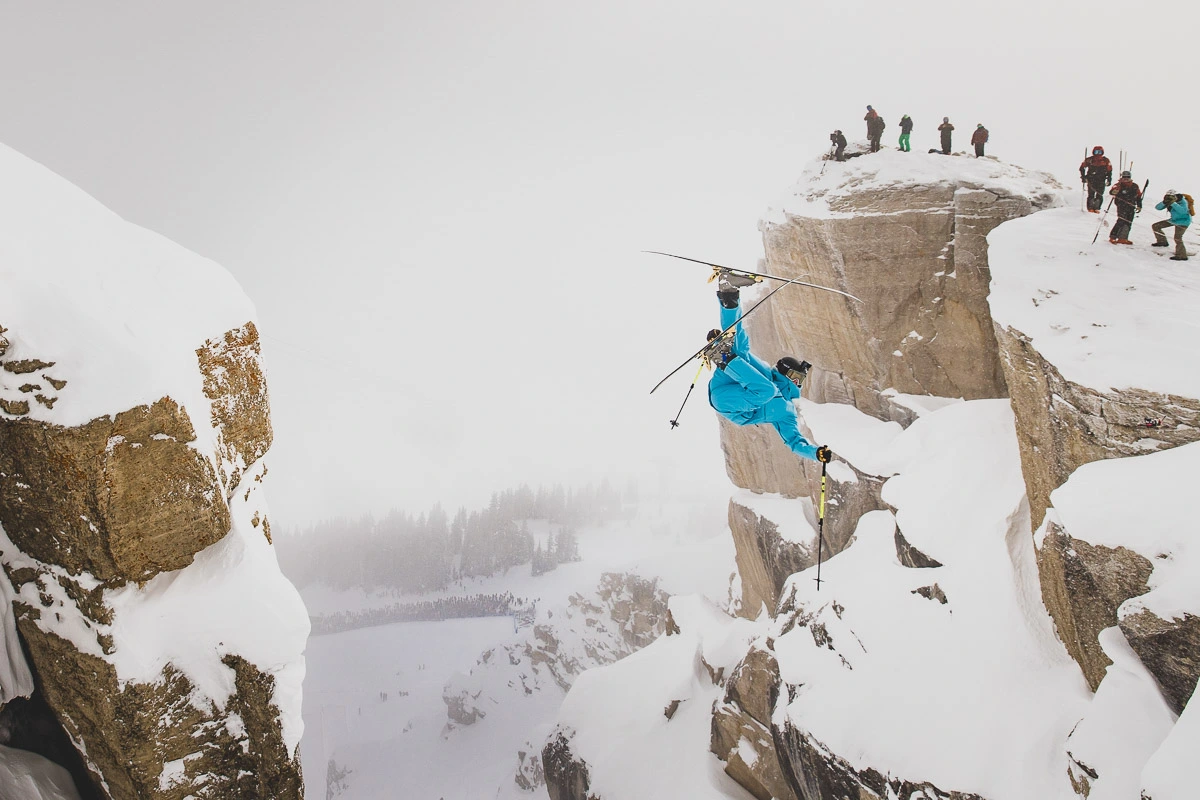
The backcountry bowls to the south of the inbounds area
The other highlight is the backcountry bowls. Jackson Hole runs a unique open-gate policy to the backcountry – they don’t try to stop you going – but makes it clear you’re on your own (it’s very similar to the system in the Alps).
Cody Bowl is the first and most iconic of these bowls, but there are more beyond that. Only problem is, Cody gets skied out very quickly, and going further takes an age, as you have to traverse across each of the bowls, and then hike over the ridge line at the far end.
The Teton Lift opens up the Crags, which ten years ago was hike-to terrain. This in turn offers easy access to Granite Canyon beyond the northern boundary, which offers challenging and sometimes avalanche-prone terrain.
A couloir and outbound terrain aren’t what the majority ski at Jackson Hole – like we said, 50% of the terrain is considered expert, so there’s more than enough to entertain inbounds for a week or more. Far skier’s right sidecountry is the mellow pitched (for Jackson Hole) Hobacks with 700m vertical descent – with two ridgelines and three blacks that get bumpy if not recently snowed on. Then, everywhere you look from the lifts, are ski tracks on steeps and sections you mightn’t have considered skiable yourself. Except that they are, with the whole inbounds area made safe (avalanche controlled) and around 65 named runs rated black or double-black diamonds (what a European skier would consider an off-piste run). Yes, there’s off-piste and extreme skiing on tap in Jackson Hole, well deserving its reputation as a place of legend.
The terrain parks aren’t bad for a freeriding resort
Jackson Hole is better known for being a natural playground of terrain with its natural features (cliffs for hucking, for example) but there are two terrain parks and four Burton Stash parks.
Stashes range from the easiest Little Stash, located next to Antelope Flats run (in between the Sweetwater Gondola and Teewinot lift), ideal for adventurous little ones and beginners, with its tree fort, mini log rides, stash creatures and banked tuns for confidence-boosting freestyle. Progress through Deer Flat Stash and Campground Stash, before heading to Stashley Ridge – between Casper and Teton lifts – with the big guns hitting the satellite dish, ninja pillows and field goal features.
More on-brand Burton Stash Parks are dotted around the mountain with varying levels of challenge, curating what the mountain already has into creative, more natural parks (the idea being it has less impact on the environment).
Classic parks include Antelope Flats for debutants, with small jumps and rails, popular with families. Bronco Park is the more serious park with easy access right next to the Teewinot lift, and ever changing in build, but with jumps rails, boxes and step-ups.
Expanded intermediate trails and terrain
An increased amount of intermediate skiing has now also opened in the resort, with Jackson Hole now trying to balance its extreme reputation with some more accessible terrain. The new Teton lift, which opened in December 2016, is roughly midway between the Casper Quad and the Apres Vous quad but goes much higher than both. It opened up two lovely blue ski runs on the north side of the mountain, plus a black run called Kemmerer which is the resort’s entry-level black run.
The Sublette lift gives access to challenging blue (reds don’t exist in North America) Rendezvous, with fantastic views at the top. It’s as high as you can get in Jackson Hole without taking the ‘tram’ (or iconic red cablecar) that serves only advanced skiers.
Crags is a wide blue run, which sweeps down to the right on the ski area perimeter and is visible from the top of the Apres Vous lift. There’s also a double blue-diamond run called Wide Open, plus two black gladed (tree) runs off Crags: Grizzly Glade and Washakie Glade.
The Sweetwater Gondola gives access to intermediate terrain at Casper, and the updated Eagles Rest chairlift bridges the gap between beginner and intermediate skiing.
But whether you’re looking for tree-skiing, bumps, or open bowls, you’ll find plenty to keep you happy – and you’ll enjoy it a whole lot more if you book some tuition with Jackson Hole’s top-notch ski school.
Beginner’s terrain is not what Jackson Hole is known for…
… but the resort has made strong efforts to combat this rep in recent years.
Jackson Hole and beginner-friendly terrain has not previously gone hand in hand. But that’s changed of late. The last few seasons have seen Jackson Hole develop beginner’s ski areas and concentrate on increasing its intermediate terrain. Skier’s left/looker’s right of Jackson Hole ski area is almost a separate resort to the steep tree-skiing haven of the skier’s right… Apart from it is connected, and has been hugely developed as a beginner and intermediate’s ski zone.
There are dedicated kids-only learning areas, to avoid any hefty collisions between beginners of varying size, as well as a practice zone where snowboarders can practice undeterred by skiers whooshing past.
There are nice easy, long runs at the bottom of the mountain: on the Eagle’s Rest trail underneath the Bridger gondola, and there’s more super-smooth skiing underneath the Teewinot chair next door, too. Together, these two trails comprise what is pretty much a private area for beginners, and with the quality of the ski school so high, beginners are almost guaranteed to make rapid progress on them. In the lower section of the mountain here, beginners have no chance of getting lost in the mesh of ski trails, and are close by to restaurants for pitstops and breaks.
The drawbacks to beginners’ areas located at the bottom of the mountain is skiers and snowboarders scooting around the valley floor tend to feel like second class citizens. This is fine, and par for the course for beginners – likely too distracted with their own learning game to notice – for the first few days, but any longer and beginners are going to start hating on those adrenaline dudes skidding to a halt in front of them after an epic top-to-bottom run…
But, strides have been made in bridging the gap between the wide-open shallow pitched slopes at the foot of the mountain, to heading to higher, more challenging ground. Where the progression from gentle trails to steep ones was abrupt just a few years ago in Jackson Hole, the blue runs from the Teton and Caspar quad chairlifts offer a good step up from beginnerhood.
More than this, they offer some beautiful relief from the very steep, deep tree runs for which many make the pilgrimage to Jackson Hole. Unless you spend full winters skiing Chamonix’s steeps, your legs will thank you for a simple carve on a ‘groomer’…
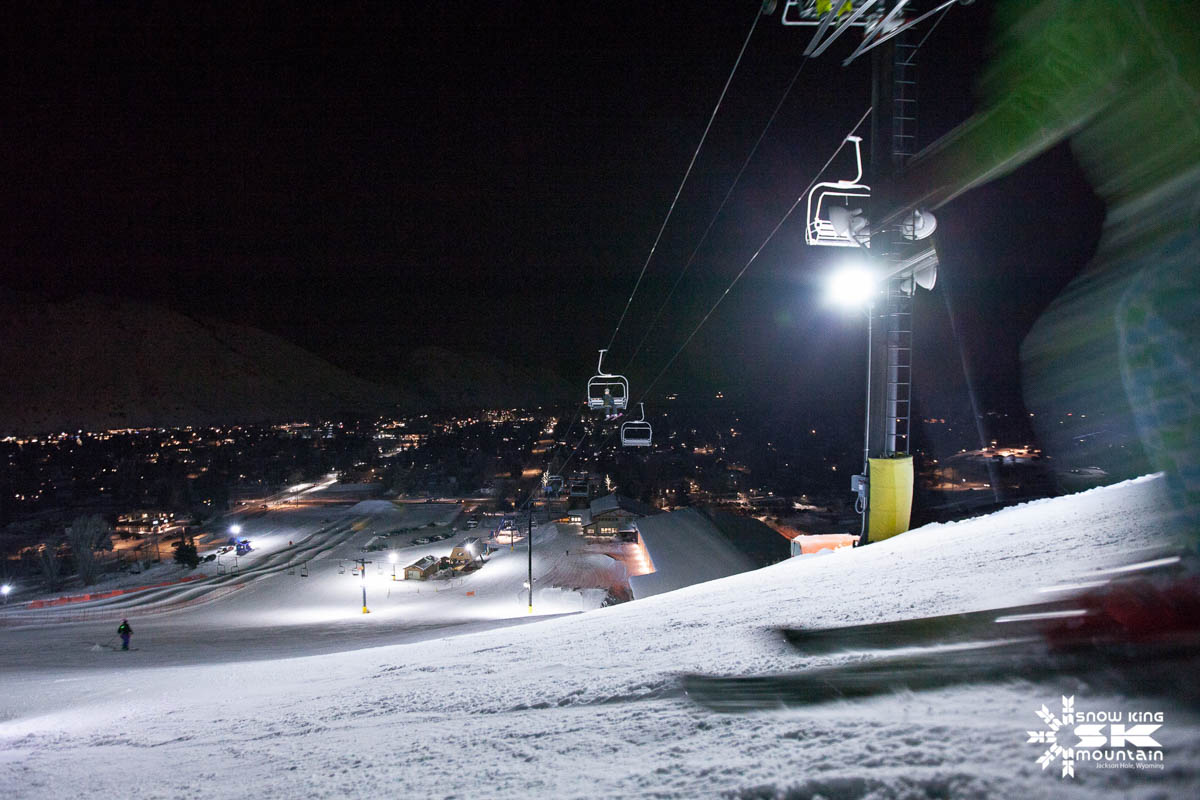
Did we mention Snow King and Grand Targhee?
In the town of Jackson itself is the often overlooked Snow King resort, home to local racing and night-skiing. It’s walking distance from the main square so it’s probably worth a morning’s skiing, especially if you’re staying in town and have teenage children who enjoy going flat out down steep groomed slopes. There’s also snow tubing at Snow King, and Jackson’s Winter Cowboy Coaster.
Just across the Teton Pass is another resort, Grand Targhee, which gets a whopping 500 inches (near to 13 metres) of snow on average each year. Its slopes are quieter than Jackson’s – so if the snow is skied out on one side of the Tetons, you can always nip across to the other for some fresh tracks. Back in the day, most people (which wasn’t a lot) came here for the cat-skiing, which is awesome, but the cat has been replaced by a high-speed six-man chair covering the terrain, which eases up access a tonne. For powder skiing and backcountry access Targhee is well known, and also for its beginner and intermediate skiing, as is well worth the trip. But note that Grand Targhee doesn’t have a big base area to entertain; A few lodgings, a base-bar and several dining facilities make up the village.
Where to Learn
As is common in American ski resorts, there’s only one ski school, owned and run by the lift company. But it’s one of our favourites. In fact the ski school is an integral part of the Jackson Hole appeal.
Of course, attracting highly-motivated, fun-loving riders and seasonaires is no problem when you’ve got a mountain like this on offer: but all the same, the instructors here do seem to have an extra spark.
Pride of place amongst the programmes on offer goes to the Steep and Deep camps – four-day orgies of adrenaline and adventure, which propel skiers and snowboarders into terrain most never dreamt they’d be able to tackle. One of our editors joined one few years back, on a snowboard, and it’s still the best four days he’s had on one plank.
“Every time we got off the lift, we’d try something more difficult,” he remembers. “First of all it was trees, then trees with bumps, then chutes, then couloirs. We had fresh powder on two days too. It was heaven.” When he got back to the Alps, he realised his riding had changed beyond recognition, too. “Without really thinking, I suddenly found myself taking off down slopes I’d have previously thought were beyond me,” he says.
Given the nature of the two sports, skiers need to be more competent than snowboarders to take on a Steep and Deep camp – in fact properly advanced, and already skiing black (or black-diamond) runs with poise and fluency. The camps are expensive – from $1000 for four full days – but they’re worth every penny. There’s plenty more on offer here – from women-only ski camps, to regular one-day classes.
The childcare facilities are run with lots of energy
The purpose-built Kids’ Ranch is run by Jackson Hole Mountain Sports School, and has its own dedicated corral complete with magic carpet lift and Fort Wyoming playground. It offers childcare from six months to three years, and ski programmes for three- to 14-year-olds in small classes. There’s also a kids’ Park and Pipe Camp.
Keen teens can join the TGR Fall Line Camp, which are demanding clinics for 12 to 17 year-olds who have outgrown regular ski school and feel comfortable off-piste.
And if your little ones want the day off skiing there are myriad real Western things to do – like going riding at one of the local working ranches. Or driving five miles from the airport to Wyoming’s National Elk Reserve where you can see some of the huge herd whilst being pulled along in a horse-drawn sleigh through the heart of the reserve.
An hour away is Yellowstone National Park, where an educational day out on a snowmobile involves looking at the amazing concentration of geological and biological treasures that includes 200 active geysers and 100 waterfalls.
Where to Stay
The most important decision is where to stay in Jackson Hole. The town has some historic hotels as well as most of the budget choices, along most of the shops and the widest range of restaurants – but it’s a 30-minute drive to and from the skiing.
Teton Village is at the foot of the slopes, along with the bulk of the spa properties and condo hotels. If ski takes priority over après-ski you’d be better off staying here with occasional afternoon and evening forays into Jackson.
At Teton village you’re practically ski-in ski-out
The Four Seasons Resort has the best slope-side location of any hotel here. It is decorated with work by Miro and Giacometti and abounds with slate floors and animal hide upholstery. It has large bedrooms and suites, a kids’ club, and a state-of-the-art spa, plus pumping après at its Handle Bar terrace overlooking the base area.
Next door is Snake River Lodge & Spa with its pleasant lobby and sitting area, and an attractive indoor/outdoor swimming-pool set among the rocks. Hotel Terra is a condo-hotel constructed and run according to sustainable green principles. Its rooms are contemporary Western in style, and all is organic – from the bed linen and mattresses to the coffee served at breakfast.
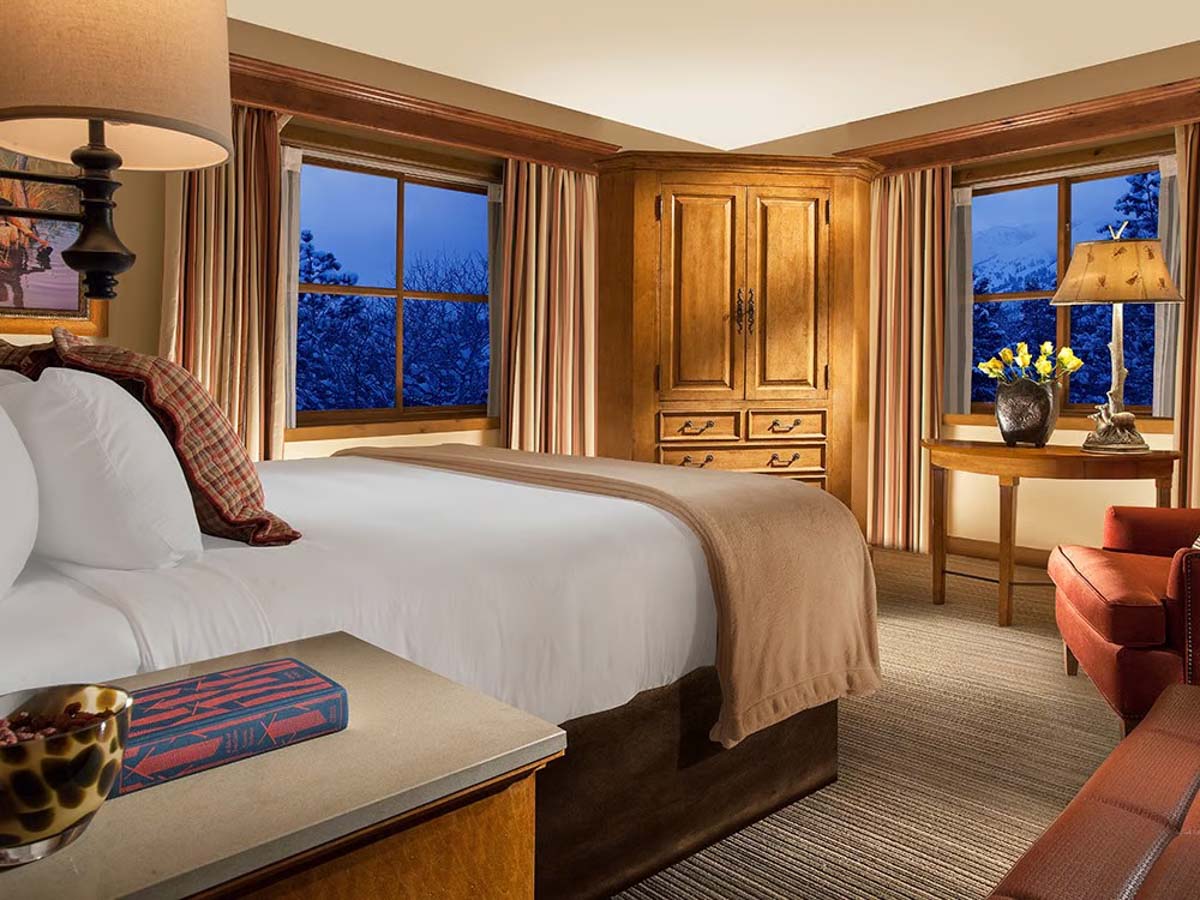
The Teton Mountain Lodge & Spa has regular double rooms, but the really eye-catching accommodation is in the suites with several bedrooms. Most have fully-equipped kitchens, and lots of really comfy furniture, and they’d make a great base for a self-sufficient family or group of friends (with plenty of money).
Caldera House is a luxury hotel just steps from the tram. It contains four four-bedroom suites and four two-bedroom suites, each with a fully equipped chef’s kitchen, dining area, living room, and outdoor space with fire pit. There’s Caldera House Spa & Athletic Club with a fitness studio equipped with Peloton bikes and yoga corner, as well as a heated outdoor infinity plunge pool and cedar sauna. Treatments are on offer both in the spa or in your own room. The in-house eateries include Corsa, featuring Italian food with a modern twist plus pizzas, and Shin Shin – a Japanese restaurant serving sushi, Waygu tartare, octopus and organic wines, Japanese beers and sakes.
If you are visiting with your family or in a group it’s hard to beat the convenience of chalet living. Check Jackson Hole Resort Lodging, which offers everything from simple one-bedroom units to luxury chalets, with prices to suit every budget.
Best place for nightlife and shopping is Jackson itself
In Jackson itself try Hotel Jackson, a luxury boutique hotel decorated in contemporary Western style using reclaimed wood and leather. There’s a free a shuttle from here to Snow King and Teton Village. Then there’s the Rusty Parrot Lodge, a five-star with a homely atmosphere. Its welcoming lobby has an open fire, terracotta floors and oriental rugs. The Wort Hotel is one of the town’s original stagecoach inns, now slightly dated but in a sort of charming way, and well positioned for the shops and restaurants around the main square.
With this one there’s a caveat – we haven’t seen The Hostel ourselves. But we couldn’t ignore it – this kind of accommodation is rare in American resorts, and it seems just the ticket. Located in Teton Village by the ski slopes, it was remodelled in 22/23, all the rooms are private, with their own bathrooms, and come in two sizes – with king-sized beds (for two) or four bunks. Bunk rooms start at just $49pp per night low season (including State taxes).
Outside Jackson and Teton Village
Amangani is one of our favourite ski hotels in the world – only it isn’t really a ski hotel. The Aman group’s emphasis is on serenity and calm, which is pretty standard stuff in the luxury summer-holiday market. But it’s still exceptional and refreshing in the world of skiing.
It’s miles from the resort – a 20-minute drive in fact (by complimentary call-us-any-time shuttle) – set on a quiet hill in the middle of nowhere: testament to the fact that it was not originally aimed at the wintersports market. Anywhere else, this would be a royal pain in the arse, but it suits the style of this hotel perfectly.
You come back from the slopes, sink into a world of seclusion and luxury, and switch off completely. Bathrooms and bedrooms are huge, beautifully designed, and full of delicious fabrics and stone, and the restaurant is one of the best in the area.
Almost next door is Spring Creek Ranch, which has accommodation in spacious chalet-style houses. A separate building has the reception area and spa in it, and another houses the restaurant. A shuttle takes you around the estate and there’s a bus into town and to the slopes.
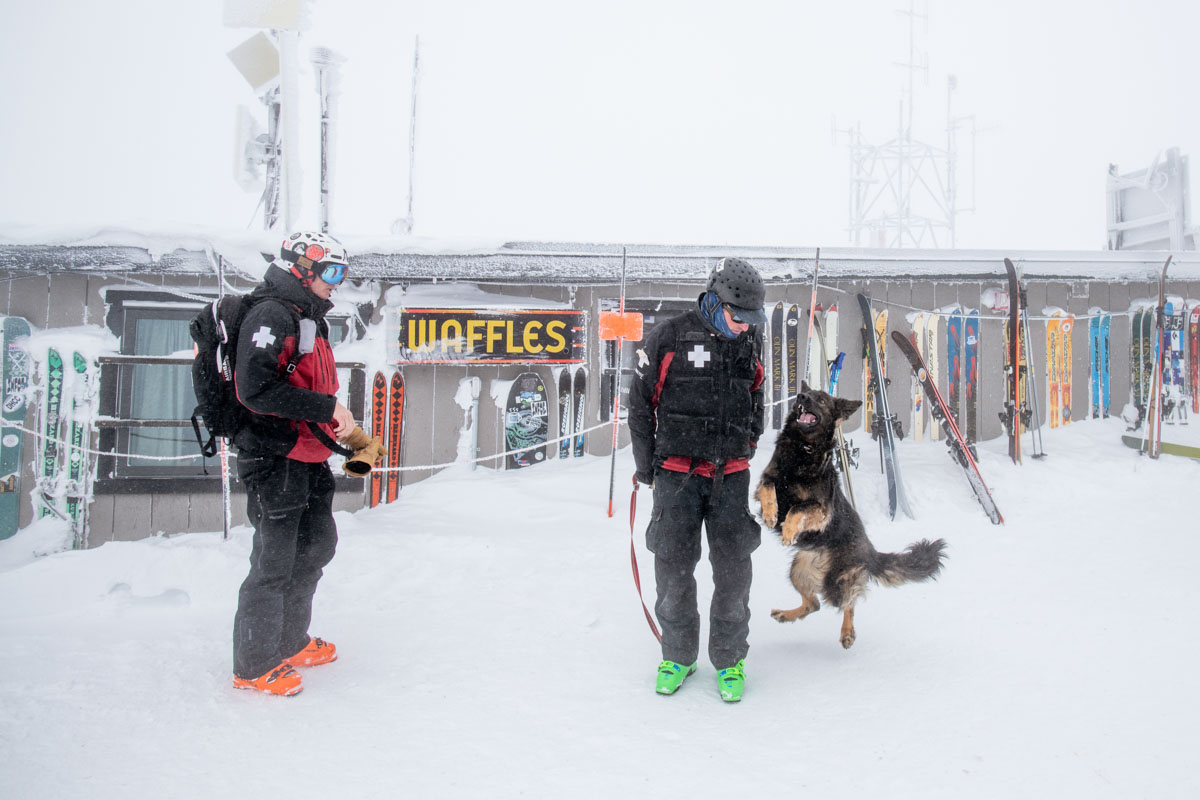
Where to Eat
A lot of Jackson Hole fans think it’s crazy to waste a lot of time over lunch when there’s so much skiing to be done. However, mountain eating has improved enormously over recent years – with Handle Bar slope side terrace of the swanky Four Seasons Hotel (pub-style menu including waffle fries with elk chili, roasted corn and tortilla soup and elk sausages).
The Piste Mountain Bistro located in Rendezvous Lodge, at the top of the Bridger Gondola, is the most popular and for good reason. It offers dishes such as home-made chili, spicy wild prawns, lamb and quinoa meatballs – with ingredients locally sourced.
For basic nosh to keep the energy coming when you’re skiing Jackson Hole, there’s the Rendezvous self-service, also in Rendezvous Lodge. Its open-plan setting offers ‘stations’ with Asian bowls and sushi, grilled meals, a salad bar and Idaho salt-baked potatoes with a huge choice of toppings. Floor-to-ceiling windows provide views of the summit of Rendezvous Mountain.
Corbet’s Cabin is something of an institution, a 60-year-old metal cabin – once a patroller’s hut – located just below the top station of the red tram, serving waffles.
At the base of the mountain, and coming highly recommended in Teton Village, is Osteria Villagio – a fantastic Italian trattoria serving home-made pasta and outstanding pizzas. For a quickly, healthy and fresh bite on the go, stop into Cafe at the base of the gondola which serves toasted bagels, baked potatoes and wraps, prepared in minutes.
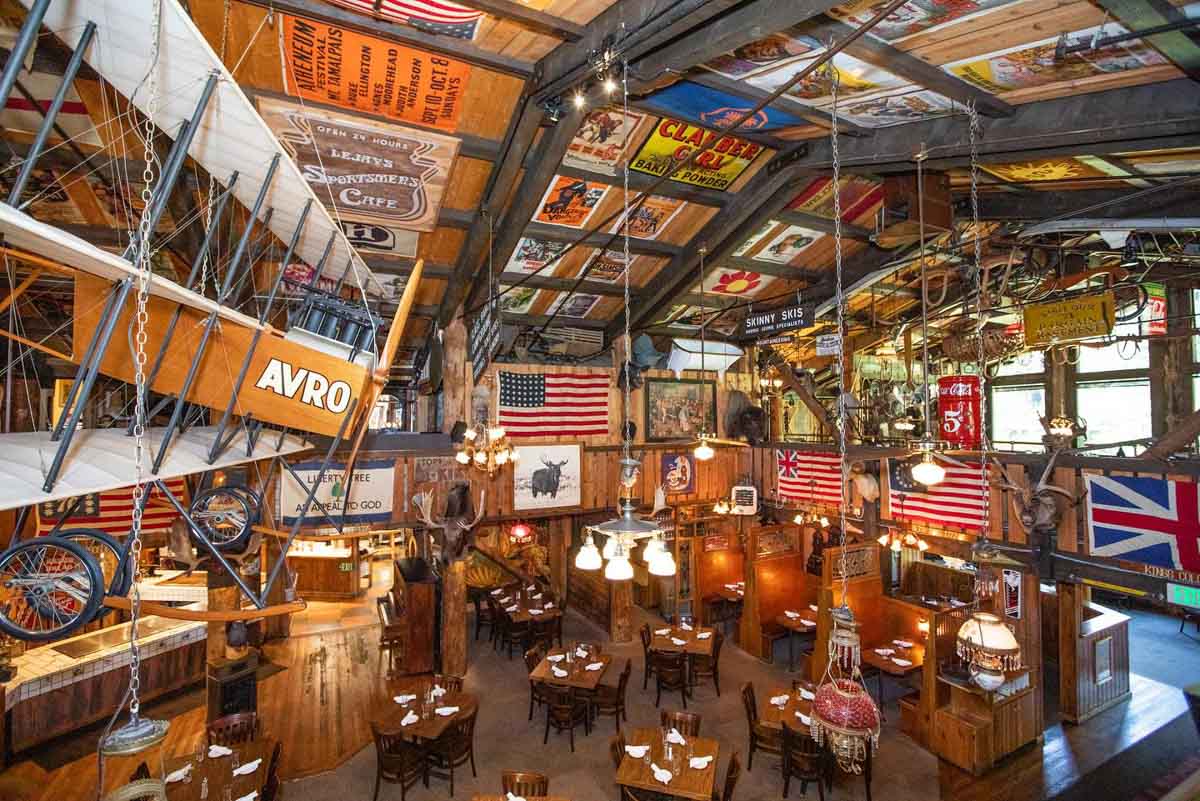
Jackson is rich. And so is the food
The Westbank Grill in the Four Seasons Hotel has an international menu, a cosy atmosphere, and high prices. The Mangy Moose Saloon is a family favourite set in a vast barn. It’s also the busiest in the resort (often featuring live music), so don’t go there for a quiet romantic meal.
Gamefish, in the Snake River Lodge and Spa, focuses on fish and smoked game. The Roadhouse Brewing Company is must-stop for a classic barbecue menu. All meats are smoked in-house and their burger is one of the best in the valley – as well as being good value. Teton Thai, located at the base of Jackson Hole, has been consistently voted the best Thai restaurant in Jackson Hole.
If anything, the restaurants in Jackson are more high-end than they are in Teton Village. Try King Sushi – our most recommended restaurant in Jackson, or Kampai, also found downtown.
Meanwhile, signature dishes at the Snake River Grill include smoked tuna carpaccio and pan-roasted Idaho trout. Rendezvous Bistro is run by the son of Snake River Grill’s owner and serves French-American fare. Intimate Wild Sage at the Rusty Parrot was the first four-diamond restaurant in Wyoming, offering sophisticated, traditional fare. Hotel Jackson’s Figs restaurant offers Lebanese-Mediterranean-inspired food in town.
For something more down to earth, Picnic in Jackson serves breakfast and lunch with home-made sandwiches, soups and wraps – catering also for vegetarians and vegans. It also has a good selection of teas and coffees, as does its sister bakery.
The Amangani Grill is one of the best eateries in the area, though it takes an effort to reach as it’s neither in town nor in Teton Village.
Where to Party
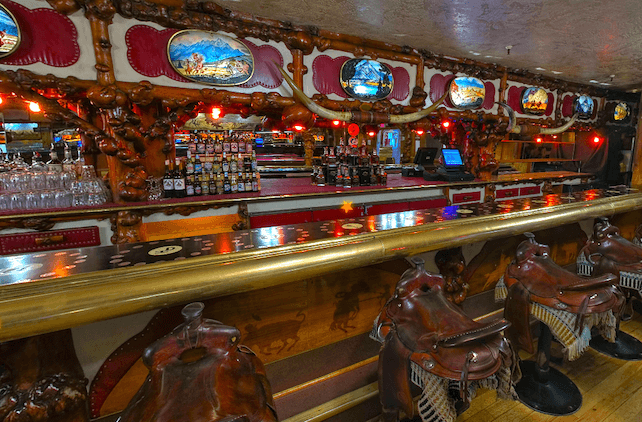
Oh yes – and did we mention the nightlife? It’s not quite at the same level as Verbier or St Anton, but it’s still pretty interesting: kind of weird in places too, which only adds to the interest.
However, Jackson Hole is not the best place for families who won’t be able to enter many of the restaurants – because they serve alcohol. This is annoying, since the ski school is so good for children. Teens should steer well clear of the nightlife. The reason for all of this is because the strict licensing laws forbid anyone under 21 to go to bars; even the over-21s must carry ID.
For those unencumbered by children, the – Ascent Lounge in the Four Seasons Resort is popular at the end of the day. The Snake River Brewing Company is where the locals and those in the know go. However, the Mangy Moose also in Teton Village, is one of America’s best après-ski bars: unpretentious, bright and buzzing with the day’s excitement. There are often live bands here too. Spur in Teton Mountain Lodge is another popular evening spot, with a bar and dance floor.
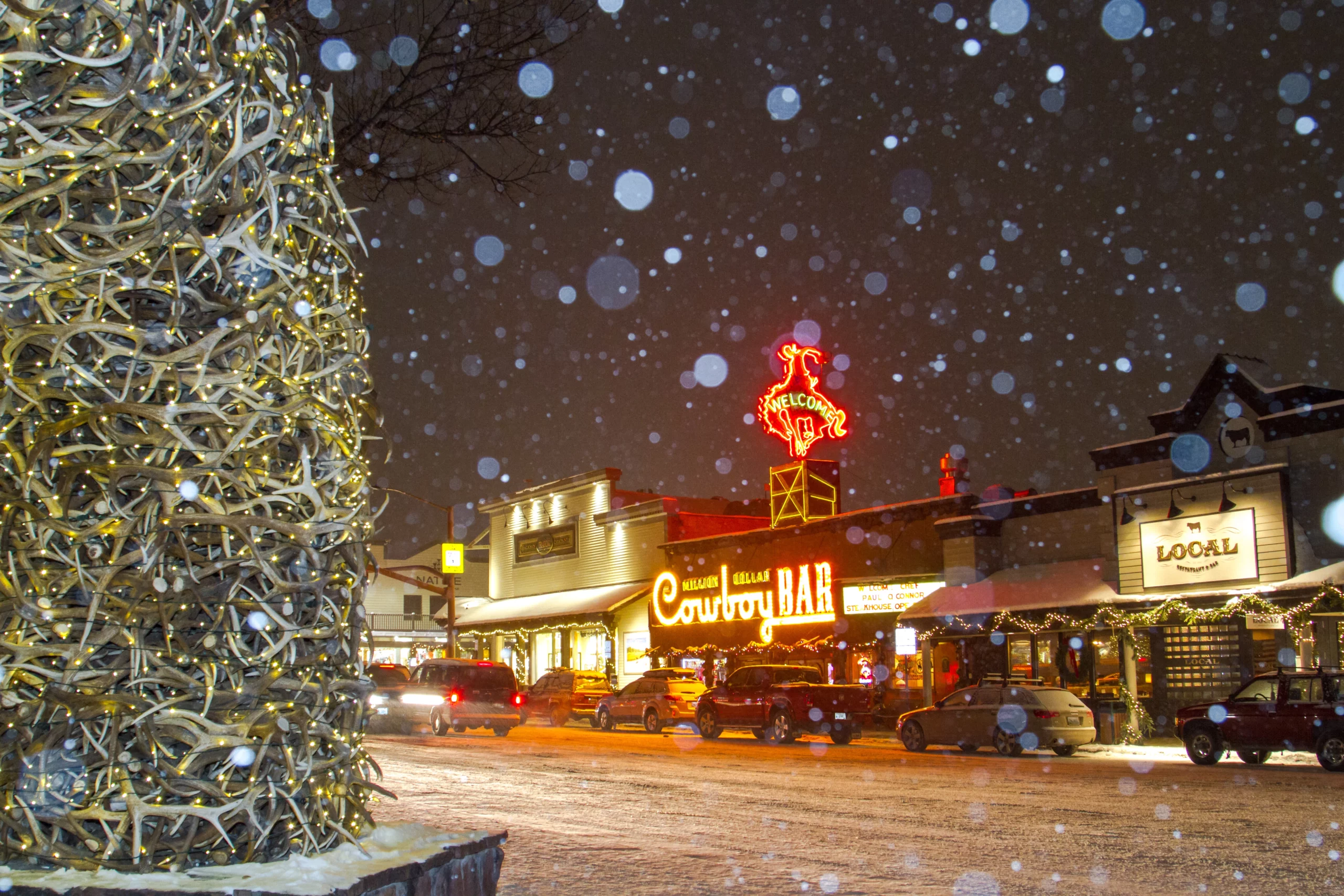
Line Dance at the Million Dollar Cowboy Bar
To keep the night going, you’ll need to head into the town of Jackson itself, 12 miles away. The Million Dollar Cowboy Bar is an essential stop: the seats at the bars are made from real saddles, for Chris’sake. When the band strikes up, people in checked shirts and ten-gallon hats start dancing. The vibe – half proper Western saloon, half tourist trap – is weird and wonderful in equal measure.
The bar has quite a history. In the 1890s it was the location for a doctor’s surgery before being rented to the first bank in Jackson Hole. Then the bank was demolished and Joe Ruby erected Ruby’s Cafe and Beer Garden. In 1937, Ben Goe bought the bar and changed the name to the Cowboy Bar. The bar held the first alcohol licence in the State of Wyoming following the repeal of prohibition.
During the 1940s and 1950s, gambling was prevalent in town. It was illegal, statewide, but Jackson’s isolated location made law enforcement difficult. The only deterrent was the occasional raid, when slot machines and crap tables mysteriously disappeared into tunnels beneath the Cowboy and Wort Hotel, and reappeared as soon as all was clear. To this day it remains the number one bar in Jackson Hole and is an example of what the Wild Wyoming West was, and still is.
There are several other bars in town – The Virginian and Silver Dollar Bar (in The Wort), which has bluegrass on Tuesdays – but the other real highlight is the Stagecoach Bar in nearby town Wilson, where the locals go to dance. Sometimes it’s a full-on resort workers’ disco freakout (on Thursdays). And sometimes, on a Sunday, it’s old-school Country-and-Western dancing. Both are, in their own ways, a blast.
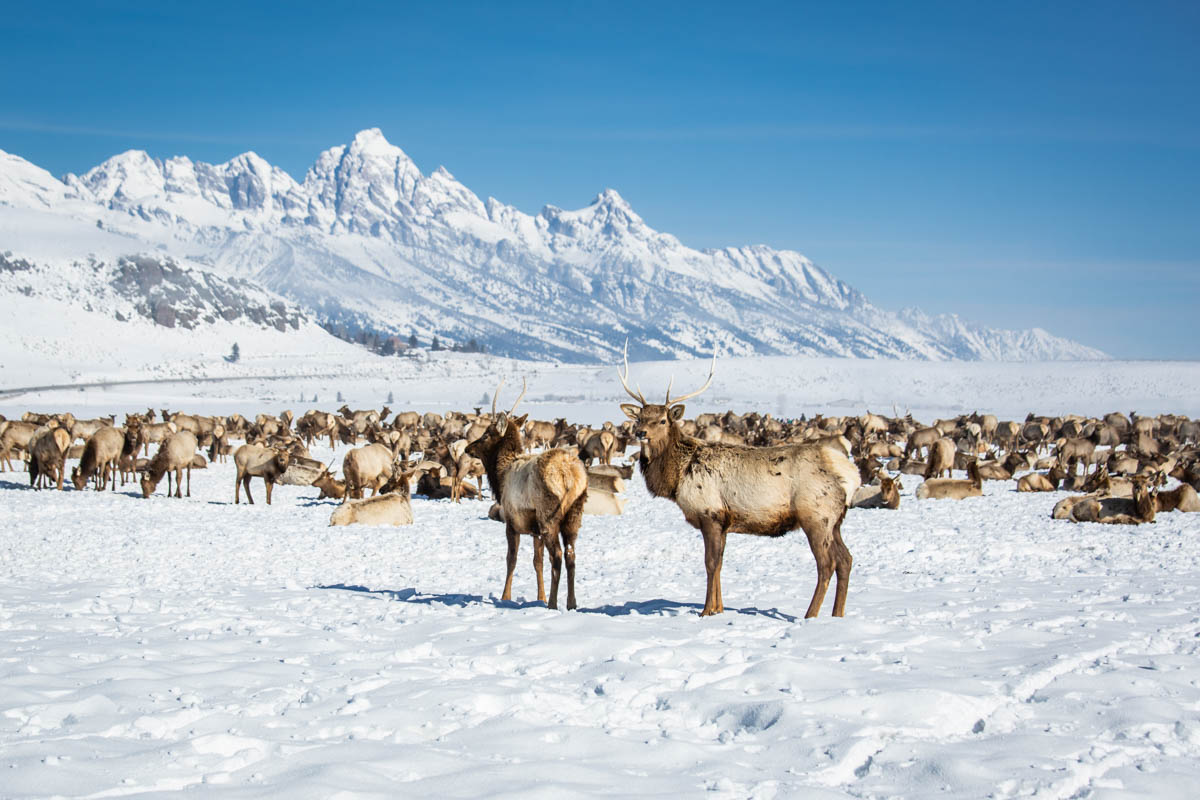
And if you want the day off skiing you can go to Wyoming’s Elk Refuge where you can see some of the huge herd and visit the brilliant National Museum of Wildlife Art, which features more than 550 artists (including Picasso, Andy Warhol, Henry Moore, Albrecht Dürer, George Stubbs, Rembrandt, Rodin and Henri Rousseau) and over 5,000 catalogued items, dating from 2500BC to the present day.
A morning spent with Jackson Hole Wildlife Safaris on just the outskirts of town (no need to head into Yellowstone mid-winter as the wildlife moves lower down) brought sightings of coyotes and wolves, huge herds (thousands-strong) of elk, lonesome moose, bison, eagles and a porcupine – close up, in the wild. It’s a winter Serengeti here. And that’s before you’ve touched on the local ecosystem in this high desert.
A day out in Yellowstone National Park involves going by snowmobile and seeing active geysers and wildlife (are bears on your sighting list?), close up and without the summer crowds.
Then there’s night-skiing, the Alpine Roller Coaster and Teton Ice Park – all at Snow King, Jackson’s local snow hill in town, as well as snow-biking, dog-sledding and hot-air-ballooning.
Add a Little Retail Therapy
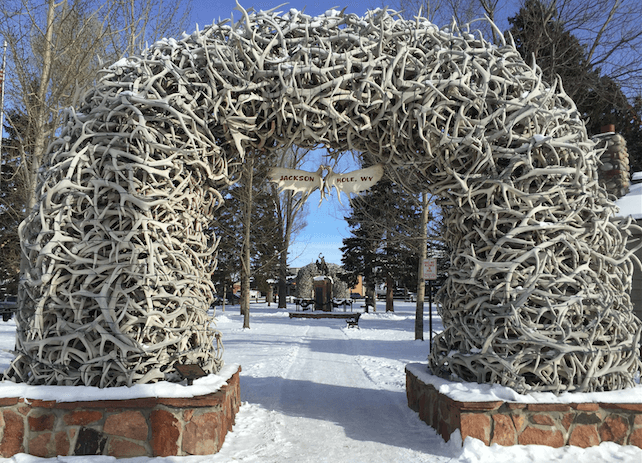
Not to be forgotten is Jackson Hole’s magnificent shopping experience. This is as far removed from the sort of designer shops you’ll find in Aspen or Courchevel, and with none of the chain shops you might find in the mass market resorts. The shopping here is Western-style – think hand-tooled cowboy boots and belts, stetsons and leather chaps.
But the best is the sort of locally-owned and -run artisan business that is growing rapidly in popularity here. These include New West Knife Works & Wyoming Whiskey, where you can learn to throw a tomahawk in the alleyway outside. Inside is a wonderful range of hand-made knives with multicoloured resin handles, and a variety of whiskey is on sale. For more alcoholic beverages, visit Grand Teton Distillery, where you can taste and buy their award-winning vodka made from Idaho potatoes and Teton glacier water.
There are two home decorating shops opposite each other in tiny Gaslight Alley: Made and Mountain Dandy where you can find a good range of unusual and often home-made gifts ranging from belts and blankets to art and jewellery. Then there’s the homegrown brand Stio for outdoor wear including shirts, jackets and skiwear that’s become a well trusted mountain brand in the USA.
Don’t forget to read our feature on 50 Years of Skiing in Jackson Hole.










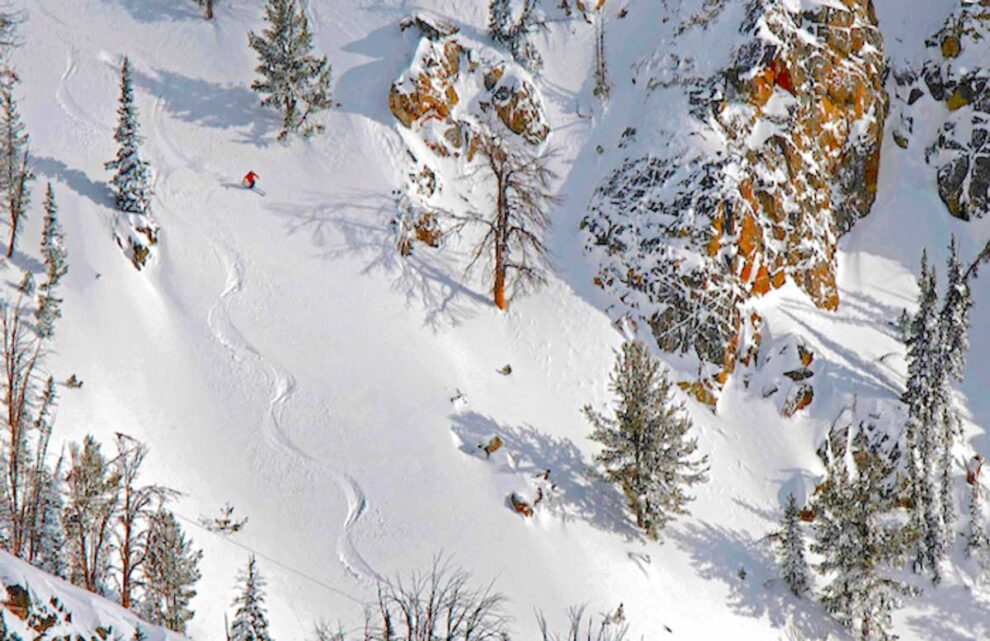
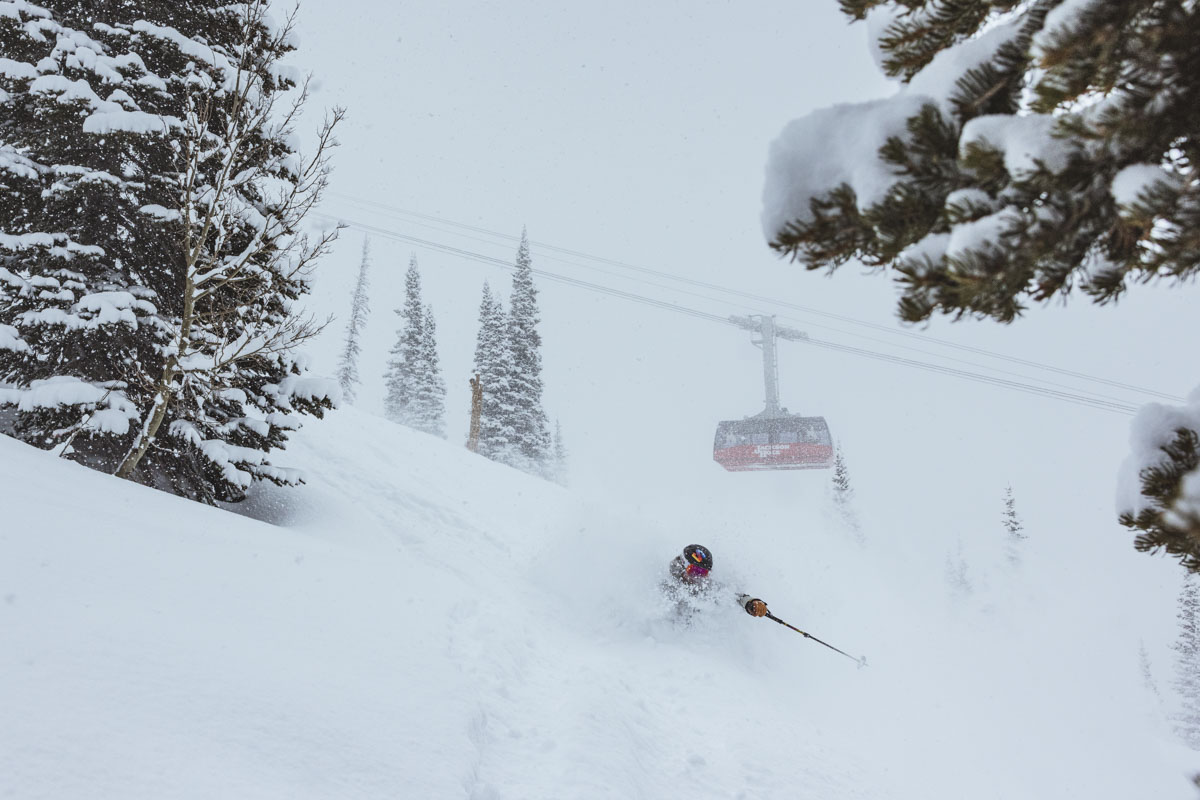
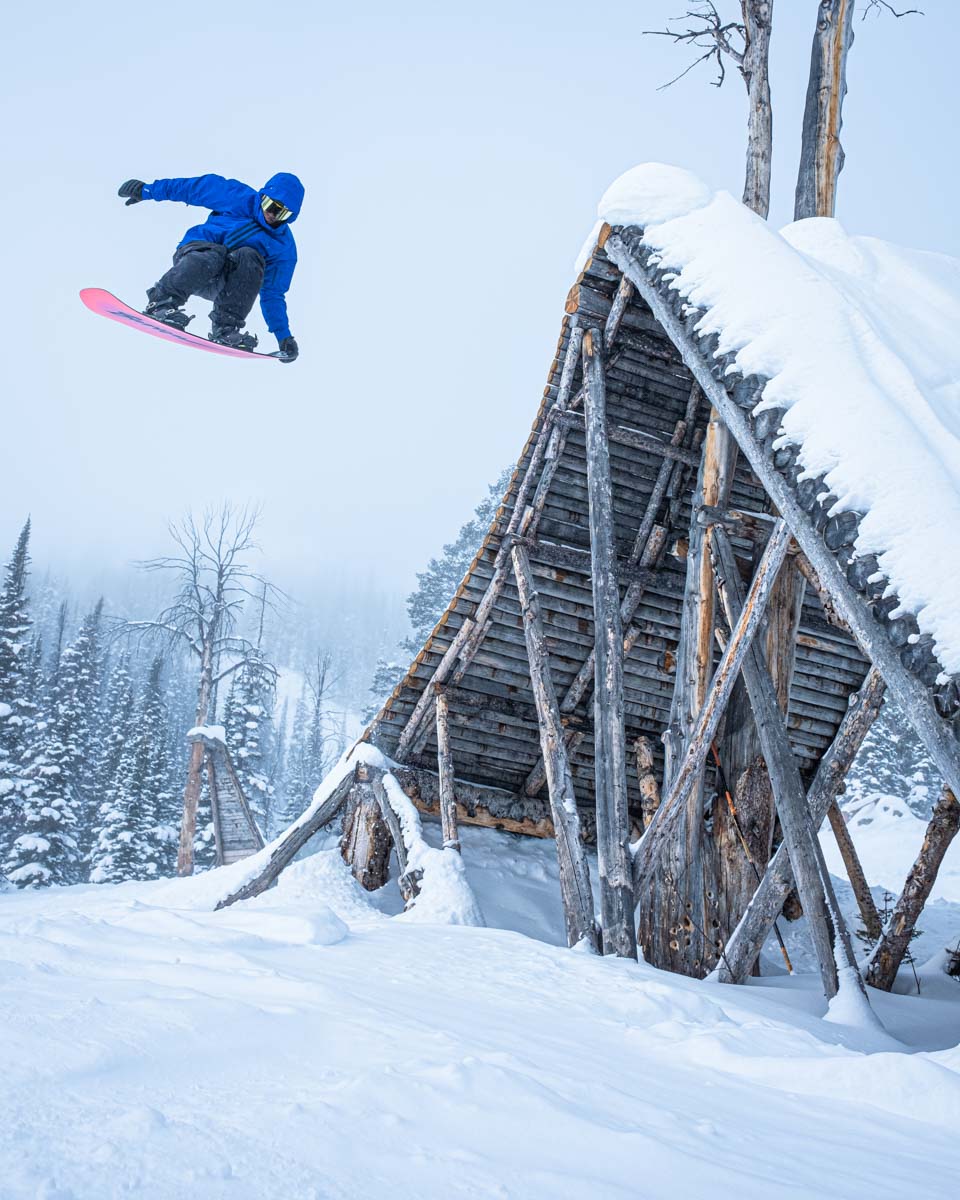
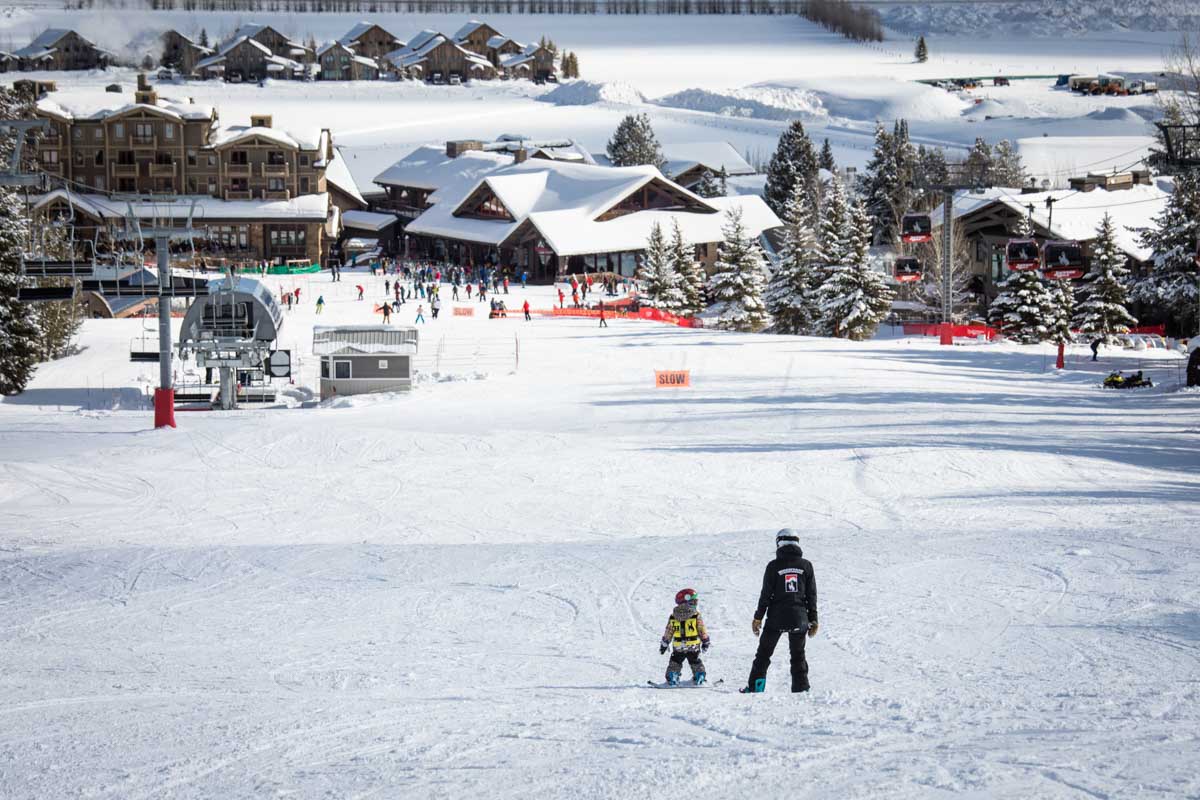
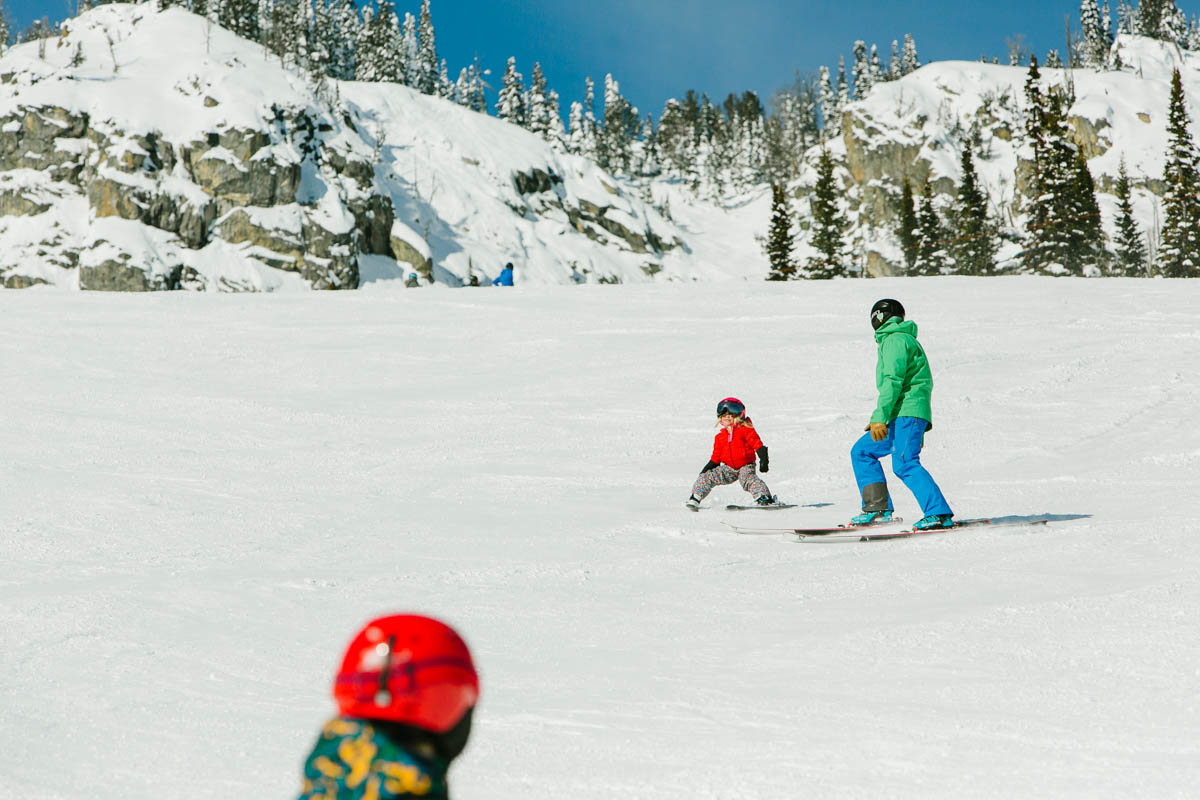
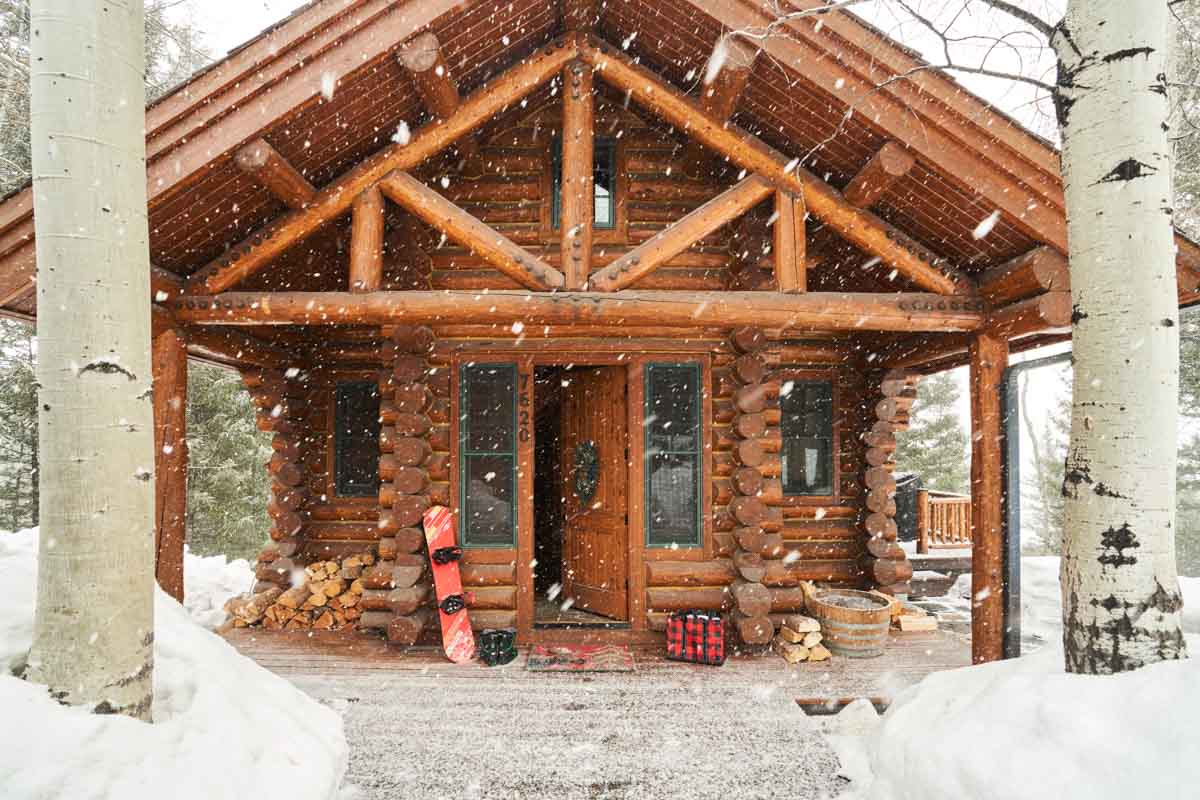
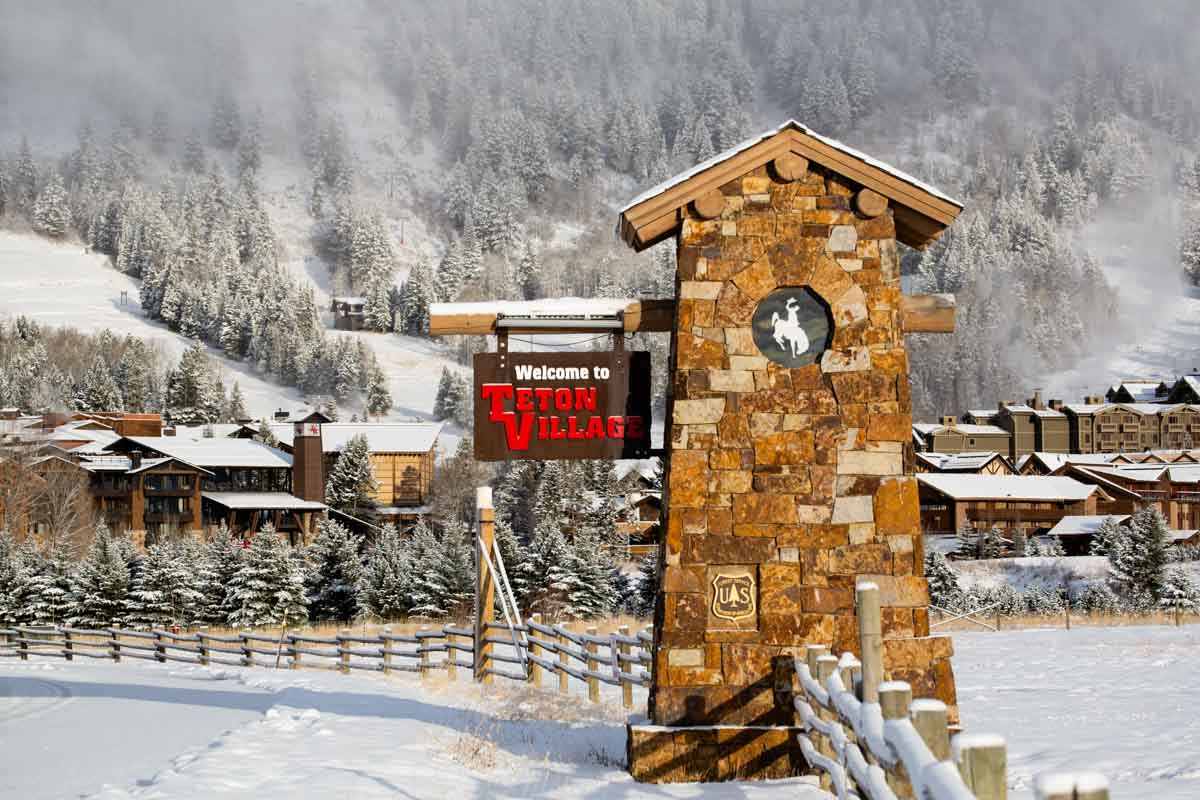
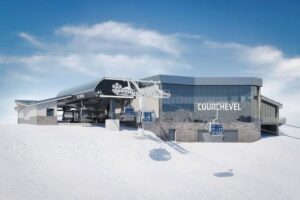
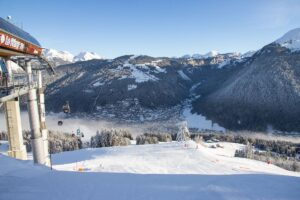
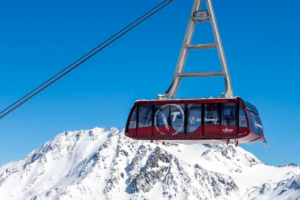
I think you guys (do I sound American enough?) have done good job describing my favourite (favorite?) ski resort in the world, from which my wife Vivianne and I only returned today! As you know only too well (as you were there and Peter was best man) we got married there on the mountain exactly 16 years ago. Back then, adrenalin (adrenaline?) was still the name of the game. But I would just say that Kari Cooper, the resort’s former marketing director with whom we had lunch at the Couloir Restaurant just a day or so ago (wonderful views across the valley) says quite rightly that JHMR has been deliberately “blueing” the resort – trying to redress the balance between Jackson’s gung-ho reputation and its easier blue-run skiing. I remember Jackson’s founder, Paul McCollister saying he had mistakenly over-emphasised the resort’s difficult skiing which he believed had scared some intermediates and families away. I think the new Teton lift and a second gondola being planned for next winter will help achieve this!
Thanks for your useful comments Arnie. Even with all the difficult skiing I still think JH is a great place for families, with an excellent ski school and nursery slopes. My eldest son learnt to ski there when he was four!